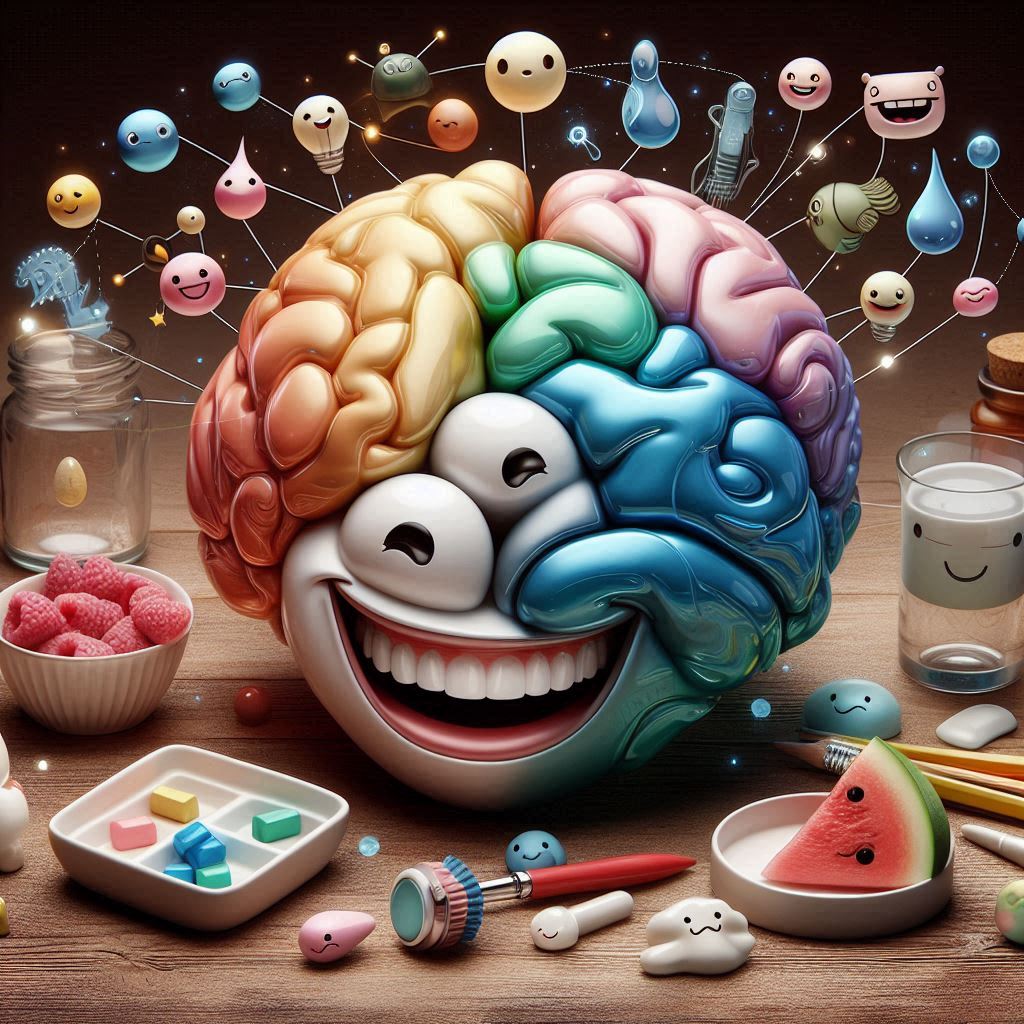Introduction
Emotional intelligence (EQ) is a crucial ability that transcends cognitive intelligence (IQ) when it comes to personal and professional success. It influences how we perceive, understand, and regulate our emotions, and how we relate to others. As a fundamental part of human interaction, EQ enables us to navigate complex social dynamics, make better decisions, and build positive relationships. But what if we told you that emotional intelligence starts with something as simple and universally recognized as a smile?
This article explores the profound connection between emotional intelligence and smiling, examining how such a seemingly small action can have a wide-reaching impact on self-awareness, empathy, social skills, and even leadership qualities. Smiling is far more than just an outward expression of happiness—it plays an instrumental role in shaping the way we perceive ourselves and others, creating an emotional environment conducive to deeper connections, and fostering emotional growth. By breaking down the role of a smile in emotional intelligence, we will explore the psychology, neuroscience, and social aspects that underpin this powerful tool, and discuss why developing a healthy smile is an essential first step in nurturing and enhancing one’s emotional intelligence.
The Neuroscience and Psychology Behind Smiling
To understand how emotional intelligence and a healthy smile intersect, we first need to take a deeper dive into the science behind the smile. Why do we smile? What happens in the brain when we do so, and how does it influence both our emotional and psychological well-being?
The Role of the Brain in Smiling
At its core, smiling is a deeply ingrained, automatic response that is connected to our brain’s processing of emotions. Neuroscientific research has shown that when we smile, whether due to joy, amusement, or even just a social cue, our brain releases certain chemicals that influence how we feel.
- Endorphins: When we smile, the brain releases endorphins—chemical messengers that act as natural mood boosters. These “feel-good” chemicals help reduce stress and anxiety, promoting a sense of well-being. Endorphins play a significant role in emotional regulation, which is a key aspect of emotional intelligence. By producing endorphins, smiling helps us navigate emotional challenges with greater resilience.
- Dopamine and Serotonin: Dopamine, another neurotransmitter, is released when we engage in enjoyable activities, and smiling triggers its production. This hormone helps with motivation and focus, enhancing emotional drive. Similarly, serotonin is involved in regulating mood and fostering a sense of happiness and emotional balance. By smiling, we activate the brain’s reward system, which improves overall emotional health.
- The Mirror Neuron System: Humans are hardwired to respond to emotions through the mirror neuron system. When we see others smile, our mirror neurons activate, prompting us to reflect their emotion. This is a powerful mechanism for social bonding. As a result, when you smile at others, they are likely to reciprocate the action, promoting positive emotional exchanges and creating an emotional connection between people.
The Facial Feedback Hypothesis: Smiling to Shape Your Emotions
The facial feedback hypothesis suggests that facial expressions are not merely the result of emotional states, but that they can also influence our emotions. In other words, the act of smiling itself can contribute to positive feelings, regardless of whether we initially feel happy.
Psychologist William James first proposed this idea, and it has since been supported by modern studies. Research has shown that even when we consciously smile—such as in a challenging situation or when we’re feeling stressed—we can improve our mood and regulate our emotional responses. This aligns with one of the foundational aspects of emotional intelligence: emotional self-regulation.
Smiling as a Tool for Emotional Self-Regulation
Emotional self-regulation is the ability to manage and control one’s emotional reactions in different situations. When we smile, even when we aren’t feeling particularly happy, it helps us exert control over our emotional responses. The smile tricks the brain into releasing chemicals that foster calm and happiness, helping us reduce the impact of negative emotions like anxiety, anger, or frustration.
In emotionally charged situations, smiling can help defuse tension and maintain composure. For example, during an intense conversation, a simple smile can soften the mood, making it easier to communicate effectively. In this way, smiling becomes a tool for emotional intelligence, helping individuals better navigate emotionally complex interactions.
The Role of a Smile in Emotional Intelligence Development
Emotional intelligence is often broken down into five key components: self-awareness, self-regulation, motivation, empathy, and social skills. Each of these components plays a vital role in our interactions with others, and each can be positively influenced by the power of a healthy smile.
Self-Awareness: Recognizing Your Emotional State Through a Smile
Self-awareness, the ability to recognize and understand one’s emotions and their impact on thoughts and behavior, is the foundation of emotional intelligence. A smile can serve as a powerful indicator of one’s emotional state. For instance, if you smile at yourself in the mirror, you are not just making a social gesture; you are affirming your sense of contentment and self-assurance.
When you consciously smile, you are more likely to notice your internal state of being—whether you’re feeling stressed, happy, or neutral—and this awareness is the first step in emotional regulation. By practicing self-awareness through smiling, you can begin to recognize the signals your body is sending about your emotional well-being. From this foundation, you can further develop emotional intelligence by consciously adjusting your emotional responses.
Self-Regulation: Using a Smile to Control Your Emotions
Self-regulation, the ability to control or redirect disruptive emotions and impulses, is another key component of emotional intelligence. A healthy smile, particularly when consciously employed, can act as an effective strategy for self-regulation.
Let’s consider the scenario of a difficult work meeting or a tense conversation. If you are feeling overwhelmed or frustrated, consciously choosing to smile can help you calm your nervous system. Smiling reduces the level of cortisol (a stress hormone) and promotes a state of relaxation, which enables you to respond more thoughtfully and calmly.
Moreover, by smiling, you signal to others that you are composed, creating a more positive emotional atmosphere. This nonverbal communication promotes trust and cooperation, two important elements in self-regulation when interacting with others.
Motivation: Using the Power of a Smile to Energize Yourself
Motivation, the ability to remain focused on goals and objectives, is crucial for emotional intelligence. Smiling can serve as a motivational tool by triggering the release of dopamine, a neurotransmitter associated with feelings of pleasure and reward. This helps foster a sense of accomplishment and joy, motivating us to continue pursuing our goals.
Additionally, the simple act of smiling can be a reminder to stay positive, even in the face of adversity. When we smile, we create a positive emotional environment that encourages forward movement, persistence, and a can-do attitude. By developing the habit of smiling in challenging situations, we strengthen our emotional resilience and our motivation to succeed.
Empathy: Connecting with Others Through a Smile
Empathy is the ability to understand and share the feelings of others. One of the most powerful aspects of a smile is its ability to connect people emotionally. When you smile at someone, you create a sense of safety and openness, inviting them to share their emotions with you. A smile communicates warmth, understanding, and approachability—qualities that are essential for building empathetic relationships.
Smiling also plays a critical role in the development of emotional awareness in others. Research has shown that when you smile at someone, it activates their mirror neurons, making them more likely to smile in return. This feedback loop creates a sense of mutual understanding and connection, essential for developing strong, empathetic relationships.
Social Skills: Navigating Interactions with Confidence
Social skills—the ability to interact effectively with others—are closely tied to emotional intelligence. Smiling enhances our social skills by creating a positive atmosphere and fostering trust. People who smile often are perceived as more approachable and friendly, making it easier for them to navigate social interactions with ease and confidence.
A smile can also help diffuse conflict and tension in difficult situations. When disagreements arise, a genuine smile can signal to the other person that you are open to communication and resolution. This helps create an environment of mutual respect and understanding, paving the way for productive and positive interactions.
Smiling and Emotional Intelligence in Real Life
The Workplace: Smiling as a Tool for Leadership and Team Building
In the workplace, emotional intelligence is a key determinant of success. Leaders with high EQ are able to inspire and motivate their teams, create a positive work environment, and foster strong professional relationships. Smiling plays a crucial role in leadership by conveying approachability, warmth, and confidence.
When a leader smiles, they are more likely to build trust and rapport with their team. This can lead to increased collaboration, higher morale, and greater productivity. Additionally, smiling helps leaders maintain emotional composure, even in high-stress situations, which is essential for maintaining a healthy work environment.
Personal Relationships: Smiling as a Catalyst for Connection
In personal relationships, smiling helps foster intimacy and trust. Whether it’s with friends, family, or a romantic partner, a smile communicates that you are emotionally available and open to connection. Smiling can help alleviate tension in difficult conversations and provide emotional support in times of distress.
Smiling also plays a key role in nonverbal communication within relationships. When both partners smile at each other, it strengthens the bond between them, enhancing emotional intimacy and connection.
Smiling in Social Interactions: Building Relationships
In the realm of emotional intelligence, building and maintaining healthy relationships is a key focus. Smiling plays a critical role in the establishment of social connections, as it fosters trust, warmth, and mutual respect. People who smile are often seen as more approachable, and their smiles signal openness and positive intent.
- Creating Positive First Impressions: When meeting someone new, a smile is one of the first things people notice. A genuine, warm smile can set the tone for a positive first impression. Smiling not only makes you appear more friendly and approachable, but it also signals to others that you are emotionally present and engaged in the interaction. This initial connection can pave the way for more meaningful and productive relationships, both personal and professional.
- Fostering Cooperation and Teamwork: In professional and social settings, smiling can be a powerful tool for building cooperation and teamwork. A smile helps to reduce tension and promotes a sense of unity within groups. It creates a nonverbal bond that encourages collaboration and open communication. When team members smile at one another, it signals trust and mutual respect, which strengthens the emotional intelligence of the group as a whole.
- Defusing Conflict: Smiling can even help diffuse conflict and ease tense situations. When people smile in the midst of disagreement, it signals that they are open to resolution and willing to engage in a constructive way. A smile can act as a form of emotional regulation, preventing negative emotions from escalating and helping to facilitate communication. In this way, smiling plays a key role in managing emotional responses and maintaining harmony in relationships.
Developing Emotional Intelligence through Smiling
While smiling is a natural, instinctive response, it is also a learned behavior. Developing emotional intelligence through smiling involves consciously practicing the art of smiling in various situations. This doesn’t mean forcing a smile when you don’t feel like it; rather, it’s about becoming more attuned to the emotional power of a smile and using it strategically to foster emotional growth.
- Mindfulness and Smiling: Practicing mindfulness can help you become more aware of your emotional state and how your facial expressions reflect that state. Being mindful of your smile—and intentionally using it to manage emotions or connect with others—can help you enhance your emotional intelligence. When you smile from a place of authenticity and self-awareness, you are better able to regulate your emotions and foster positive interactions with others.
- Intentional Smiling: Smiling intentionally, even when you’re not feeling particularly happy, can help you regulate your emotional state. By focusing on the act of smiling, you can influence your emotions in a positive direction. This practice not only enhances your own emotional well-being but also helps you navigate social situations with greater ease and empathy.
- Smiling as a Tool for Emotional Growth: Over time, smiling can become a tool for emotional growth. As you practice smiling intentionally, you may notice improvements in your ability to manage emotions, understand the emotions of others, and engage in healthier, more positive relationships. By connecting with your emotions and others through the simple act of smiling, you lay the foundation for emotional intelligence to flourish.
Conclusion
In conclusion, emotional intelligence is a multifaceted skill set that allows us to navigate the complexities of our emotional worlds and relationships. While emotional intelligence involves various cognitive and emotional components, it all starts with a smile. A healthy smile is a powerful tool for cultivating self-awareness, self-regulation, empathy, and social skills—the building blocks of emotional intelligence.
By embracing the science and psychology behind smiling, we can enhance our emotional intelligence and create more meaningful, fulfilling interactions with others. Smiling is not just a physical gesture; it’s a gateway to emotional growth, social connection, and overall well-being. Whether you’re trying to regulate your own emotions or connect with others on a deeper level, a healthy smile can make all the difference. So, next time you find yourself facing a challenging situation, remember that a smile is more than just a facial expression—it’s the first step in developing emotional intelligence and creating positive, authentic connections with those around you.
SOURCES
Ekman, P. (2003). Emotions revealed: Recognizing faces and feelings to improve communication and emotional life. Henry Holt and Company.
Goleman, D. (1995). Emotional intelligence: Why it can matter more than IQ. Bantam Books.
Harker, L. A., & Keltner, D. (2001). Expressions of positive emotion in women’s college yearbook pictures and their relationship to personality and life outcomes across adulthood. Journal of Personality and Social Psychology, 80(1), 112-124.
Kaiser, R. B., & Hogan, R. (2007). Leadership and emotional intelligence: A review of the evidence. The Leadership Quarterly, 18(6), 457-480.
Laird, J. D. (2007). Feelings: The perception of self. Oxford University Press.
Lutz, C., & White, G. M. (1986). The anthropology of emotions. Annual Review of Anthropology, 15, 405-436.
Mayer, J. D., Salovey, P., & Caruso, D. R. (2004). Emotional intelligence: Theory, findings, and implications. Psychological Inquiry, 15(3), 197-215.
Nezlek, J. B. (2007). Interpersonal and intrapersonal processes in the regulation of emotions. Journal of Research in Personality, 41(5), 1155-1172.
Niven, K., Totterdell, P., & Holman, D. (2009). Affective experiences and emotional intelligence at work: A review and research agenda. Journal of Organizational Behavior, 30(5), 585-602.
Rasmussen, L. B., & Berntsen, D. (2007). The smiling effect: Does a smile promote cooperation? Emotion, 7(4), 788-799.
Schneider, T. R., & Alden, L. E. (2011). The effect of smiling on social influence: How smiling changes the way people perceive you. Journal of Social Psychology, 151(5), 536-552.
Wells, S. K., & Keltner, D. (2000). Expressing positive emotion: The role of smiling and laughter. Journal of Personality and Social Psychology, 78(2), 292-300.
Zaki, J., & Ochsner, K. N. (2012). The neuroscience of empathy: Progress, pitfalls, and promise. Nature Neuroscience, 15(5), 675-680.
HISTORY
Current Version
January 28, 2025
Written By:
SUMMIYAH MAHMOOD




